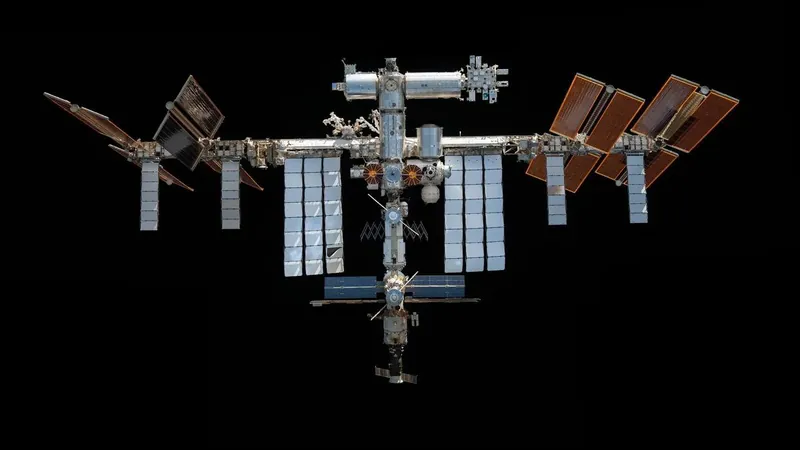
Alarming ISS Leaks: A Major Threat to Astronaut Safety Unveiled!
2024-10-26
Author: Yu
Introduction and Overview
NASA, in collaboration with its Russian counterpart Roscosmos, has flagged a concerning situation aboard the International Space Station (ISS) involving 50 critical “areas of concern” stemming from a persistent leak that has plagued the Russian segment since 2019, according to a recent report.
Safety Risks Identified
This alarming report published by NASA's Office of the Inspector General (OIG) emphasizes that while ongoing repairs are in place, the leak continues to be deemed a top safety risk for astronauts aboard the ISS. The situation has escalated to a level 5 on NASA’s internal risk assessment scale, marking it as an urgent issue that requires immediate attention.
Monitoring and Mitigation Efforts
In an exclusive interview with the Washington Post, NASA officials indicated they are closely monitoring four cracks and an additional 50 risk areas throughout the station. Notably, Roscosmos has taken steps to mitigate the issue by applying sealants and patches. However, despite these efforts, the leaks remain a significant concern, particularly as they are located near a hatch. To enhance safety, NASA has requested that this hatch be kept closed as much as possible, especially at night, and Roscosmos has complied with this request.
Astronaut Safety Precautions
To ensure their safety, NASA astronauts are maintaining their presence on the U.S. side of the ISS, remaining close to their escape vehicles in the event of an emergency evacuation. Nonetheless, NASA has reassured the public that there is currently no immediate danger to the astronauts' safety or the operational capabilities of the spacecraft. "Although the leak poses no direct threat right now, it is something we are all keeping a close eye on,” emphasized ISS program manager Joel Montalbano during a recent news conference.
Leakage Rate and Repair Updates
This five-year-long leak has seen fluctuations, particularly a rise in the leakage rate to 2.4 pounds per day in early 2024, a significant increase from a historic low. Fortunately, repair efforts have reportedly reduced that flow by about a third, instilling a cautious sense of optimism among agency officials.
Origin of the Leak
The leak originates from a service module transfer tunnel in Russia’s Zvezda module, which has been integral to the station since its launch in 2000. As the ISS ages, regular maintenance is crucial to prolonging its operational life, with hopes extending until 2030 to fulfill NASA's staffing and research objectives in low Earth orbit.
Other Risks and Future Plans
Amid these concerns, NASA's Inspector General is also keeping an eye on a range of other risks that could jeopardize the future of the ISS, including potential micrometeoroid impacts and ongoing supply chain challenges.
Conclusion and Outlook
Looking ahead, NASA has commissioned SpaceX to develop a significant Dragon-class spacecraft tasked with safely deorbiting the ISS. This initiative models NASA’s commitment to transitioning operations to commercial space stations within the next decade.
Final Thoughts
As the clock ticks, the pressing question remains: how will these critical vulnerabilities and ambitious plans shape the future of human space exploration? Stay tuned for updates as this story unfolds!

 Brasil (PT)
Brasil (PT)
 Canada (EN)
Canada (EN)
 Chile (ES)
Chile (ES)
 España (ES)
España (ES)
 France (FR)
France (FR)
 Hong Kong (EN)
Hong Kong (EN)
 Italia (IT)
Italia (IT)
 日本 (JA)
日本 (JA)
 Magyarország (HU)
Magyarország (HU)
 Norge (NO)
Norge (NO)
 Polska (PL)
Polska (PL)
 Schweiz (DE)
Schweiz (DE)
 Singapore (EN)
Singapore (EN)
 Sverige (SV)
Sverige (SV)
 Suomi (FI)
Suomi (FI)
 Türkiye (TR)
Türkiye (TR)